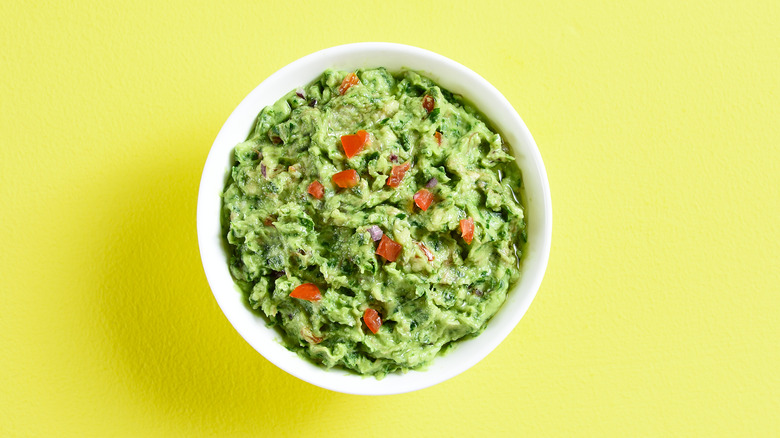Is It Possible To Get Sick From Eating Brown Guacamole?
The avocado has skyrocketed to stardom over the years. Statista reports that 436 million pounds of avocados were consumed in 1985, but in 2020, that number was roughly 3 billion. Praised for their superfood qualities of good fats and healthy fiber, avocados have been the center of a Millennial meme. With a velvety texture and flavor that lends itself to so many dishes, the fruit is beloved, especially in guacamole. While it tends to be devoured almost instantly, leaving guac to sit can lead to browning — but could it be enough to make you sick?
Grown in tropical climates, the abundance of nutrient-dense avocados led Aztecs in southern Mexico to develop the earliest guacamole recipes, notes Avocados from Mexico. Although traditional recipes involve mashing the fruit with a mortar and pestle and adding salt, lime juice, onions, tomatoes, and cilantro, there are many guacamole variations. But they all face the same problem of browning.
It's not appealing, but it won't hurt you
Just like apples, avocados contain an enzyme called polyphenol oxidase that reacts with oxygen to cause browning, explains Compound Interest. Luckily, this happens only with avocados that are directly exposed to oxygen, leaving the vibrant green guac underneath the oxidized layer. This means that while it's not the most aesthetically pleasing, you can safely eat brown guacamole without getting sick.
However, Food Network advises keeping guacamole (either homemade or store-bought) in the refrigerator for a maximum of 3 days. Just make sure to cover the dip with plastic wrap or keep it in a sealed container to prevent further oxidation. If it starts to smell or completely lose its emerald hue, it's wise to toss it.
Of course, the ideal green guac starts with quality avocados. When shopping for avocados, the fruit should be soft, but not totally mushy. While sporadic brown spots are markers of bruising, Healthline recommends avoiding avocados that are totally brown (or worse yet, moldy) inside. Likewise, if the fruit has a strong chemical smell, it should also be discarded.

